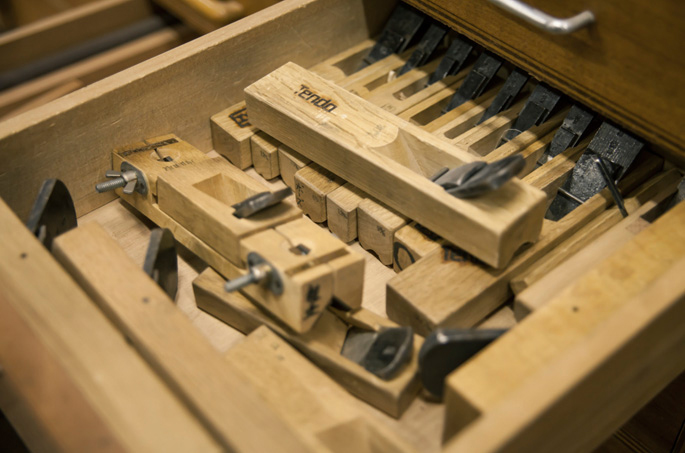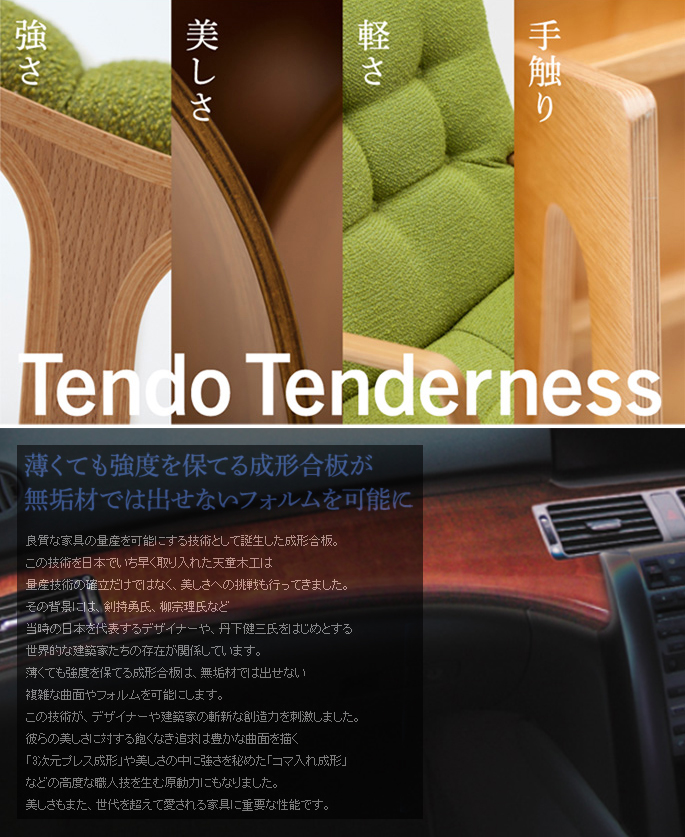The origin of seats made of molded plywood, which can be found in many places, mainly in Japanese-style spaces, such as inns and restaurants, as well as ordinary dwellings.
Designed in 1963 by Kenji Fujimori. One of the designers who studied in Scandinavia and was greatly influenced by the creation of functional and beautiful furniture.
Scandinavian furniture making techniques are fully utilized in the design of this chair, and it has a variety of functions, although it is a simple shape obtained by processing a single piece of plywood into a three-dimensional curved surface.
The holes in the seat are provided to prevent the cushion from slipping due to friction with the tatami mats. At the same time, it also plays a role in weight reduction and warpage prevention. One of its features is its light weight of 1.7kg, which can be stacked and convenient for storage.
旅館や飲食店をはじめ、一般住居など和の空間を中心に多くの場所で見られる、成形合板による座イスの元祖。
藤森健次によって1963年にデザインされました。北欧で学び、機能的かつ美しい家具づくりに大きな影響を受けたデザイナーの一人です。
北欧の家具作りの手法がこの座イスのデザインにも存分に生かされており、一枚の成形合板を三次元曲面で加工しただけのシンプルな形状ですが様々な機能を有しています。
座面の穴は座布団が畳との摩擦で滑りにくくする目的のために開けられています。同時に軽量化や反り防止の役割も果たします。1.7kgと軽く、積み重ねることができ、収納に便利なことも特長のひとつです。




